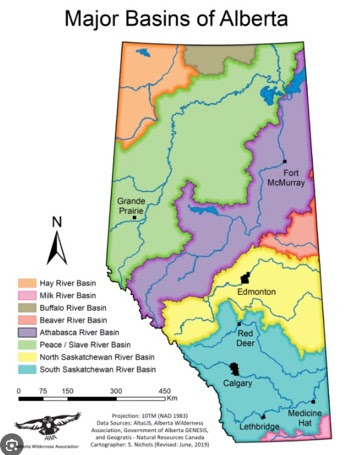Every year, I can always count on Bernie Peet to do a fly tying presentation. I think this may have been the 10th year Bernie has spent an evening with our club sharing some great fly tying techniques and ideas. Bernie's theme tonight was hot spot flies. The presentation was very well thought out. We tied flies with a hot spot tag, two hot spot thoraxes and finally a hot spot rib! I know I will use all 4 patterns that we tied tonight. It is so refreshing to have such a diversity of fly tying skills within our club! Bernie's British background that includes so many different fly fishing experiences allows our group to embrace these different perspectives and apply them to our fly fishing adventures!
...some thoughts from Bernie on Hot Spot Flies
Sometimes, the addition of a brightly
coloured “hot spot”, which could be a tag, rib or thorax, can make a huge
difference to the effectiveness of an otherwise drab fly. Whether this makes flies more noticeable under
lower light conditions, or whether a bright colour triggers an aggressive
response is open to question. However,
experience suggests that, under certain conditions, hot-spot flies do work
well, both in rivers and in still water. Nymphs and wet flies can benefit from a “hot
spot”, using colours such as fluorescent green, chartreuse, orange, red or
white, in addition to pearlescent materials.
It’s worth tying flies with varying degrees of “flash” because sometimes
an over-flashy fly will put fish off whereas the same fly, but a bit less
bright, will give results.
Next week the theme is chernobyls. Steve Leuthi and Bob Vanderwater will share photos from a cool backcountry fly fishing trip in Banff National Park. We will then tie some chernobyls. It will definitely be a fun evening!
We still have a few spots left for the all day fly tying workshop with Phil Rowley on Saturday February 2nd. Check out the poster in the margine for all the details. It will be an awesome day of fly tying!
Remember that Pub Night is Friday February 1st starting at 7 pm at Tiffany's Restaurant. We will be in the pub!
Pepper’s Lake Special (Bernie Peet design)
Many years ago, after a frustrating few hours casting at rising fish at Pepper’s Lake, I fished this fly on a clear intermediate line and caught one fish after another. Each time I fished at Pepper’s this fly was successful when many other patterns failed to score.
Hook: Size 10 – 14 curved
Bead: Copper or gold, 7/64th
Tag: Fluorescent orange thread or floss (can be coated in UV resin)
Rib: Copper wire
Body: Pheasant tail
Hackle: Reddish brown cock or hen
Hotspot Black and Peacock
A combination of a black fly with a fluorescent green tag or thorax seems to work well in many situations. This pattern can also be tied with a bead head or with some lead wire under the thorax.
Hook: Size 12 – 14, 2x nymph
Thread: Black
Tail: Black cock fibres
Rib: Silver or gold wire
Body: Peacock herl
Thorax: Fluorescent green thread or floss, coated in UV resin
Thorax cover: Black pheasant tail
Hackle: Black cock fibres, tied separately on each side of the head
Okey Dokey Buzzer (Makflies, YouTube)
This style of brightly coloured chironomid, which bears no resemblance to anything natural, is very popular in the UK and is tied with the head in a variety of bright colours such as chartreuse, orange and pink. The profile is thicker than one would normally use for a chironomid pattern.
Hook: Size 12 – 16, chironomid
Body: White fluorescent thread or floss
Rib: Silver blue or light blue coloured copper wire (or silver/gold) – tied with 2 – 3 touching turns at the bend of the hook
Head: Fluorescent green thread or floss
Finish: Coat whole fly with brushable UV resin
Red and Gold Diawl
The Diawl Bach, Welsh for “Little Devil” is a popular British fly that has spawned hundreds of variations. It is used as a dropper fly and fished static or very slowly, imitating a range of aquatic insects such as chironomids and even small fry. This particular pattern was described by Rob Denson in January’s “Trout and Salmon” magazine and combines a small amount of gold flash in the dubbing with a holographic red rib.
Hook: Size 10 – 14, 1x nymph
Thread: Red
Tail: Ginger cock
Rib: Red holographic
Body: Squirrel and hare’s ear mixed 50:50 with a pinch of gold Ice Dub
Throat hackle: Ginger cock

















1 comment:
I missed the last 2 flies, do you post the video's , I thought at one point I may have seen it but cant seem to find it
Post a Comment